
Wiring test
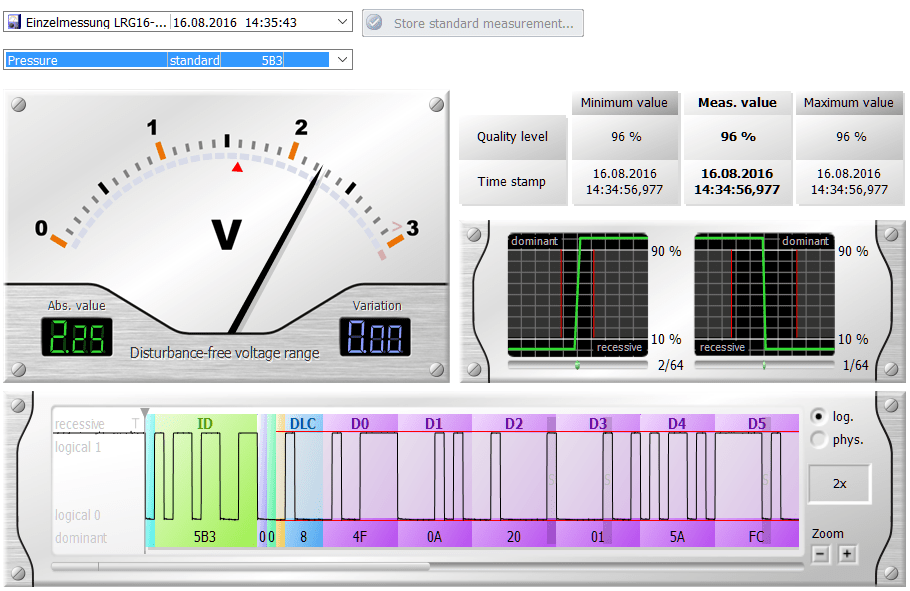
Measurement of single node
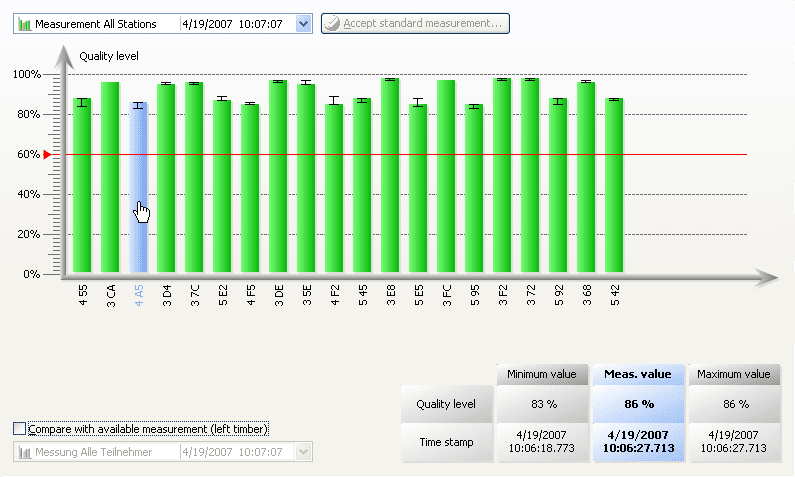
Measurement of all nodes
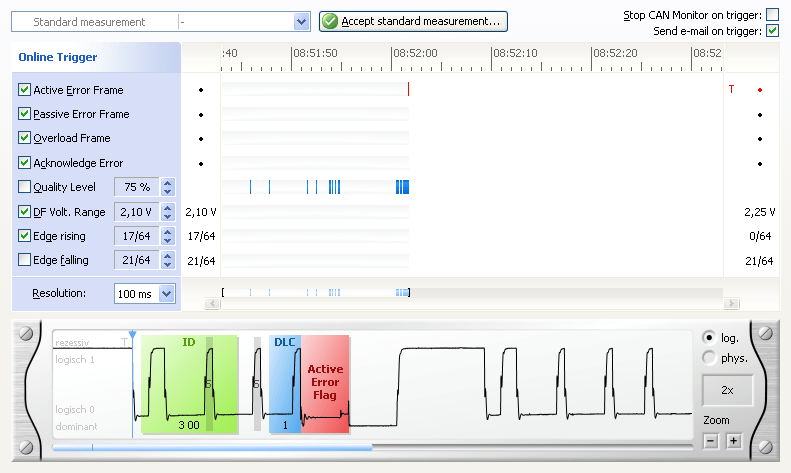
Online trigger tracks errors
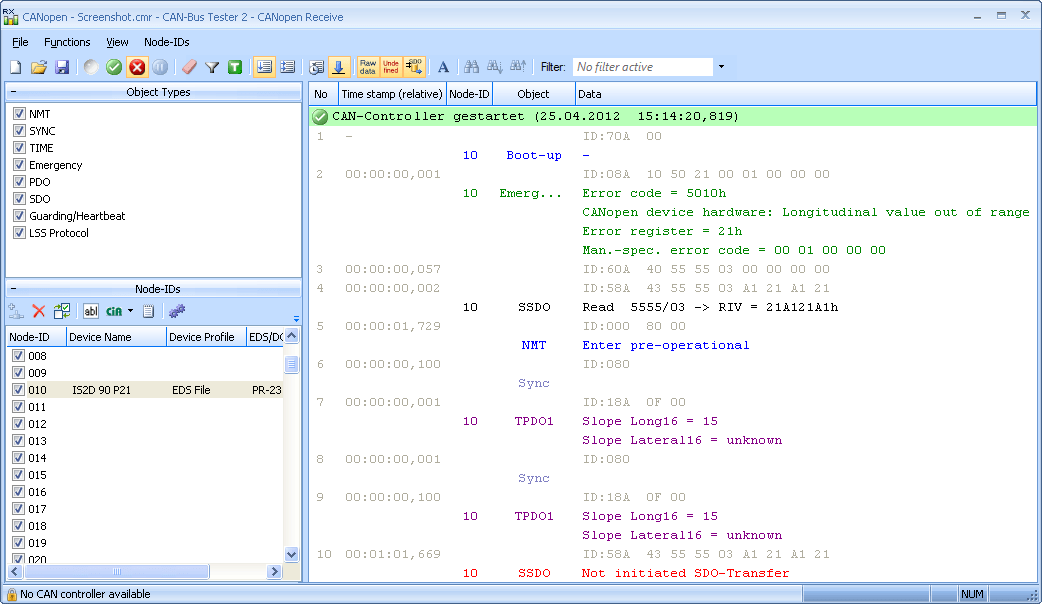
Protocol monitor and decoder
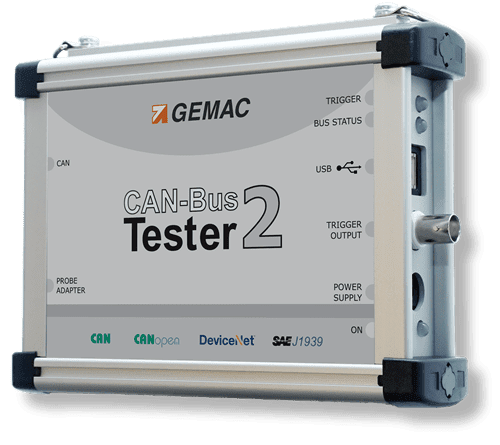

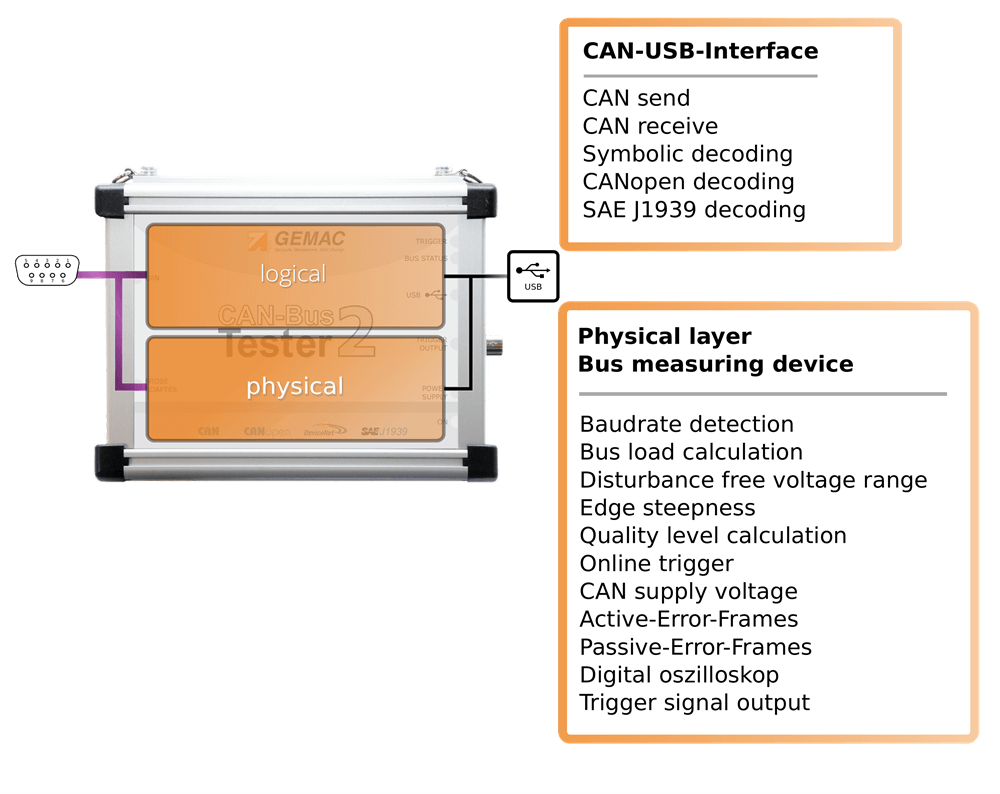
Check the setup of your bus.
Dive unto the ground.
Control and analyse your data traffic.
Within the following video we show the physical layer measurements in the software. Please switch on subtitles.
For a detailed table with the single measurements of the physical layer diagnosis tools, please have a look at this page.

Product |
Description |
GEMAC order number /shoplink |
Basic set |
||
| CAN-Bus Tester 2 | CAN-Bus Tester 2 – basic version Bus system: CAN complete delivery contents of CAN-Bus Tester 2 |
PR-22517 – 10 |
Licenses for optional bus systems (physical measurements) |
||
| CANopen | License Key for bus system CANopen | SW-22517 – 01 |
| DeviceNet | License Key for bus system DeviceNet | SW-22517 – 02 |
| SAE J1939 | License Key for bus system SAE J1939 | SW-22517 – 03 |
Licenses for optional Protocol monitor |
||
| CAN Transmit, CAN Receive | License key for protocol monitor CAN (transmit/receive) | SW-22517 – 10 |
| CANopen receive | License key for protocol monitor CANopen (receive) | SW-22517 – 11 |
| SAE J1939 receive | License key for protocol monitor SAE J1939 (receive) | SW-22517 – 12 |
Optional accessory for more country versions |
||
| Mains power cable Australia | Mains power cable Australia for Adapter AC/DC | KB-00093 – 03 upon request |
Device/Program |
Choose your software version |
User manual |
Datasheet |
||||
 |
|
CAN-Bus Tester 2 usermanual (15887 downloads ) | CAN-Bus Tester 2 datasheet (14414 downloads ) | ||||
| UK declaration of conformity according to ISO/IEC 17050 – 1 | PR-22517 – 10-UK (0 downloads ) | ||||||
| EU declaration of conformity according to ISO/IEC 17050 – 1 | PR-22517-ZF‑1 – 3‑E-EU-declaration_of_conformity (10581 downloads ) | ||||||
| Declaration table of Hazardous Substances (China RoHS) | PR-22517-ZF‑1 – 0‑C China RoHS (8977 downloads ) | ||||||
 CANobserver
Scroll to top
CANobserver
Scroll to top